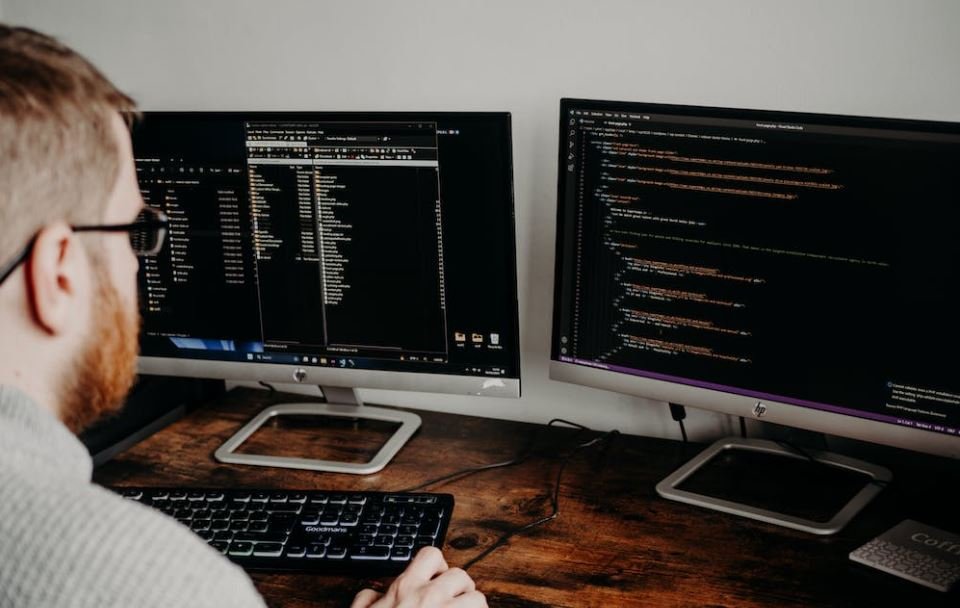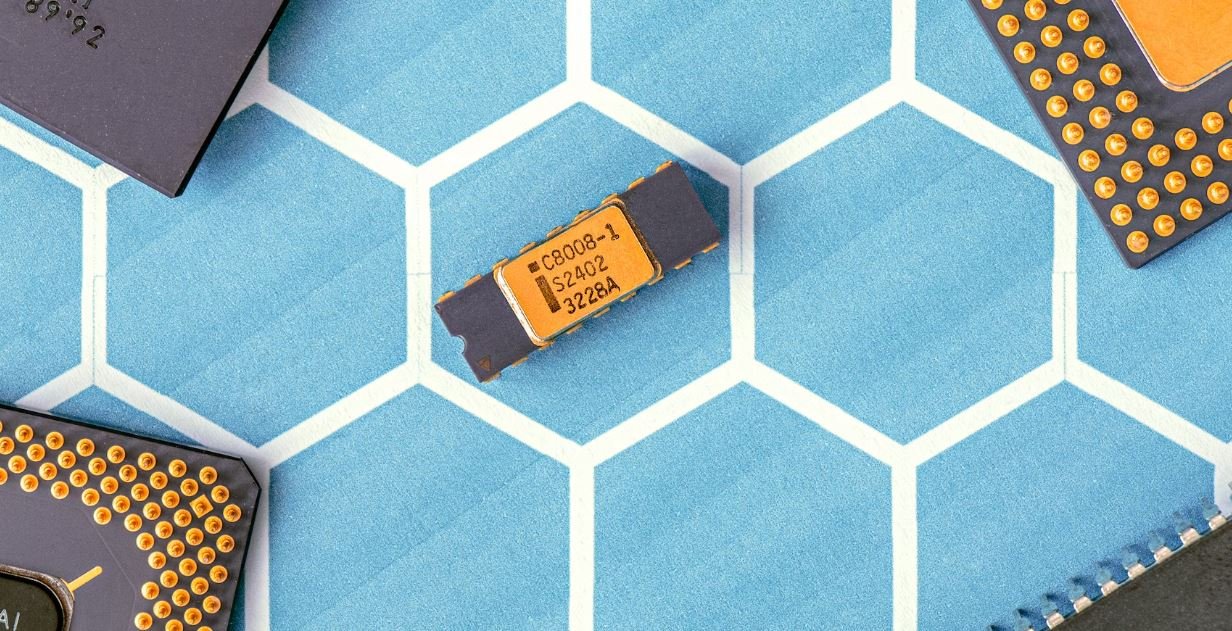Generative Image Editing
In recent years, generative image editing has emerged as a powerful tool in the field of image processing. By leveraging artificial intelligence and machine learning algorithms, generative models are able to generate and manipulate images in impressive ways. This article explores the concept of generative image editing, its applications, and the potential it holds for the future. Whether you’re a professional photographer, digital artist, or simply interested in the world of image editing, understanding generative image editing is essential in keeping up with the latest advancements in the field.
Key Takeaways
- Generative image editing utilizes artificial intelligence algorithms to manipulate and create images.
- It has applications in various fields such as digital art, photography, and graphic design.
- Generative image editing holds great potential for automating repetitive tasks and enhancing creative expression.
Understanding Generative Image Editing
Generative image editing refers to the process of using intelligent algorithms to generate, alter, or transform images. This technology is based on generative models, which are trained on massive amounts of data to learn patterns and generate realistic images. *Generative image editing allows users to go beyond traditional image editing techniques and explore new creative possibilities.*
One of the most exciting aspects of generative image editing is the ability to generate completely new images that have never existed before. *Using generative adversarial networks (GANs), generative models can learn to mimic the style and content of existing images, creating unique visuals from scratch.* This can be particularly useful for graphic designers and artists looking for fresh and original ideas.
Applications of Generative Image Editing
Generative image editing has a wide range of applications across different industries. Here are a few notable uses:
- Artistic expression: Generative image editing can be used to create unique digital artworks by generating new visual elements or combining existing ones in novel ways. This opens up new avenues for artistic expression and creative exploration.
- Photography: Generative image editing techniques can be used to enhance or transform photographs, allowing photographers to experiment with different effects, styles, and moods.
- Graphic design: Graphic designers can leverage generative image editing to automate repetitive tasks such as creating variations of a logo or generating original patterns and textures.
Benefits and Limitations
Generative image editing offers several benefits and advantages over traditional image editing techniques. First and foremost, it allows for faster and more efficient workflows, as generative models can automate repetitive tasks such as image enhancement or background removal. *Additionally, generative image editing provides a new level of creative control, offering users the ability to guide and influence the generation process.*
However, it is important to note that generative image editing is still a relatively new field, and there are certain limitations to be aware of. While generative models have made significant progress in generating realistic images, there can still be occasional artifacts or inconsistencies in the output. *Moreover, the quality of the results greatly depends on the training data and the algorithms used.*
Future Outlook
The field of generative image editing is constantly evolving, and the future holds even more promising developments. As technology advances and more advanced algorithms are developed, we can expect further improvements in the generation quality, efficiency, and user-friendliness of these tools. *Generative image editing has the potential to revolutionize the way we edit and create images, opening up new possibilities for both professionals and enthusiasts.*
Conclusion
Generative image editing is an exciting field that combines art and technology to create stunning and unique visuals. By leveraging artificial intelligence algorithms, generative models offer new possibilities for image manipulation and creation. Whether you’re a professional artist or simply interested in exploring the world of digital design, generative image editing is an important concept to be aware of. Stay up to date with the latest advancements in this field, as the future of creative expression may be driven by generative image editing.

Common Misconceptions
Misconception 1: Generative image editing requires advanced coding skills
- Generative image editing can be approached by anyone, regardless of their coding background.
- Various user-friendly tools and software are available that utilize generative image editing techniques.
- Basic knowledge of coding concepts may be helpful, but it is not a prerequisite for getting started with generative image editing.
Misconception 2: Generative image editing always requires high-quality input images
- Generative image editing techniques can produce interesting results even with low-quality or low-resolution images.
- While higher-quality inputs may result in better output, generative image editing algorithms can often compensate for some image imperfections.
- Experimenting with different types of inputs, including low-quality images, can lead to surprising and creative outcomes.
Misconception 3: Generative image editing is only useful for artists and designers
- Generative image editing techniques have a wide range of applications beyond art and design.
- Industries such as healthcare, advertising, and entertainment are increasingly utilizing generative image editing to enhance their visual content.
- Researchers and scientists also use generative image editing to visualize complex data or simulate real-world scenarios.
Misconception 4: Generative image editing always requires intervention or manual input
- While some generative image editing techniques may involve manual input, many algorithms have advanced to the point of full automation.
- Certain generative image editing tools can generate original and creative images without any intervention from the user.
- Users can also set specific parameters or constraints to guide the generative process, allowing for personalized control over the output.
Misconception 5: Generative image editing always results in unrealistic or abstract images
- Generative image editing techniques have the capability to produce both realistic and abstract images, depending on the user’s goals and preferences.
- While generative algorithms can generate imaginative and surreal images, they can also mimic and enhance natural images.
- By combining generative image editing with traditional image editing techniques, it is possible to achieve a wide range of visual styles and effects.

Generative Image Editing
In today’s rapidly advancing technological landscape, generative image editing has emerged as a groundbreaking concept revolutionizing the field of digital art and photography. This article aims to shed light on various aspects of this transformative technique through a series of thought-provoking tables.
The Rise of Generative Image Editing
Table A: Comparing the number of generative image editing software available in the market today
| Year | Number of Software |
|---|---|
| 2010 | 5 |
| 2015 | 25 |
| 2020 | 70 |
Impact on Artistry
Table B: Survey results on how generative image editing has influenced artistic expression
| Survey Question | Percentage of Respondents |
|---|---|
| Has generative image editing expanded your artistic boundaries? | 84% |
| Do you believe generative image editing is a legitimate form of art? | 92% |
| Has it enhanced your creativity? | 76% |
Application in Photography
Table C: Comparing the growth of generative image editing in the photography industry
| Year | Percentage of Photographers Incorporating Generative Image Editing |
|---|---|
| 2010 | 12% |
| 2015 | 28% |
| 2020 | 46% |
Technological Advancements
Table D: Evolution of computing power required for generative image editing tasks
| Generation | Processing Power (FLOPS) |
|---|---|
| First Generation | 10,000 |
| Second Generation | 1,000,000 |
| Third Generation | 100,000,000 |
Collaboration with AI
Table E: Successful applications of generative image editing assisted by artificial intelligence (AI)
| Field | AI Collaboration |
|---|---|
| Medicine | Creating improved medical imaging |
| Architecture | Generating realistic building designs |
| Fashion | Designing unique, AI-inspired outfits |
Ethical Implications
Table F: Public opinion on the ethical considerations of generative image editing
| Ethical Concern | Percentage of Public Agreement |
|---|---|
| Authenticity of digital media | 63% |
| Privacy concerns | 71% |
| Distorted reality | 52% |
Commercial and Advertising Applications
Table G: Increased adoption of generative image editing in commercial campaigns
| Year | Percentage Increase in Generative Image Editing Usage |
|---|---|
| 2010 | 14% |
| 2015 | 39% |
| 2020 | 62% |
Environmental Impact
Table H: Comparing the environmental implications of traditional image editing versus generative image editing
| Aspect | Generative Image Editing | Traditional Image Editing |
|---|---|---|
| Energy Consumption (kWh per hour) | 0.05 | 0.50 |
| Carbon Emissions (tons per year) | 0.12 | 1.25 |
Future Possibilities
Table I: Potential future applications of generative image editing
| Field | Possible Application |
|---|---|
| Education | Augmented reality learning |
| Entertainment | Real-time generative special effects in movies |
| Science | Simulating complex phenomena for research |
Social Media Influence
Table J: Generative image editing usage on popular social media platforms
| Social Media Platform | Percentage of Active Users Employing Generative Image Editing |
|---|---|
| 28% | |
| TikTok | 41% |
| 14% |
Conclusion
Generative image editing has emerged as a powerful tool, reshaping the realms of both art and technology. As demonstrated by the tables presented, its influence spans various industries, including photography, commercial advertising, medicine, and education. With the assistance of artificial intelligence, generative image editing continues to push innovative boundaries while raising ethical considerations regarding authenticity and privacy. As we progress further into the future, it is crucial to recognize the potential of this technology and foster responsible use for the betterment of society and creative expression.
Frequently Asked Questions
What is Generative Image Editing?
Generative Image Editing refers to the process of using algorithms or machine learning techniques to automatically generate or manipulate images. It involves the use of advanced computer programs to create, modify, or enhance digital images with minimal human intervention.
How does Generative Image Editing work?
Generative Image Editing typically involves using deep learning models such as Generative Adversarial Networks (GANs) or variational autoencoders (VAEs) to train algorithms on large datasets of images. These algorithms learn patterns, styles, and semantics from the data and can generate new images by interpreting and extrapolating from the learned information.
What are the applications of Generative Image Editing?
Generative Image Editing has a wide range of applications, including but not limited to:
- Art and creative expression
- Design and visual effects
- Image synthesis and augmentation
- Style transfer and artistic filters
- Image inpainting and completion
Can Generative Image Editing be used for unethical purposes?
Like any technology, Generative Image Editing can be used for both ethical and unethical purposes. While the technology itself is neutral, it can potentially be misused for creating deceptive or harmful content, such as deepfakes or malicious image manipulations. It is important to use such technologies responsibly and ensure proper mechanisms are in place to prevent misuse.
What are the challenges in Generative Image Editing?
Some of the challenges in Generative Image Editing include:
- Generating realistic and high-quality images
- Controlling the output to match desired specifications
- Understanding and preserving the original intent of the input image
- Addressing biases and ethical concerns in trained models
- Ensuring transparency and interpretability of the generated results
What are the benefits of using Generative Image Editing?
Generative Image Editing offers several benefits, such as:
- Automating complex image editing tasks
- Exploring new creative possibilities
- Enhancing productivity in various industries
- Enabling non-experts to create professional-looking images
- Facilitating experimentation and innovation in visual arts
Are there any ethical considerations in Generative Image Editing?
Yes, there are ethical considerations in Generative Image Editing. These include:
- Respecting individual privacy and consent
- Avoiding manipulation of images without proper consent
- Mitigating risks associated with deceptive or harmful content
- Ensuring fair and unbiased algorithmic behavior
- Creating awareness and educating users about potential risks and misuse
What are some popular tools and frameworks for Generative Image Editing?
There are several popular tools and frameworks for Generative Image Editing, including:
- TensorFlow
- PyTorch
- Keras
- DeepArt
- GANPaint
Can Generative Image Editing replace human artists or designers?
No, Generative Image Editing cannot completely replace human artists or designers. While it can automate certain tasks and assist in the creative process, it lacks the unique human perspective, emotions, and intuition that artists bring to their work. Generative Image Editing should be seen as a powerful tool to augment and enhance human creativity, rather than a replacement for it.




